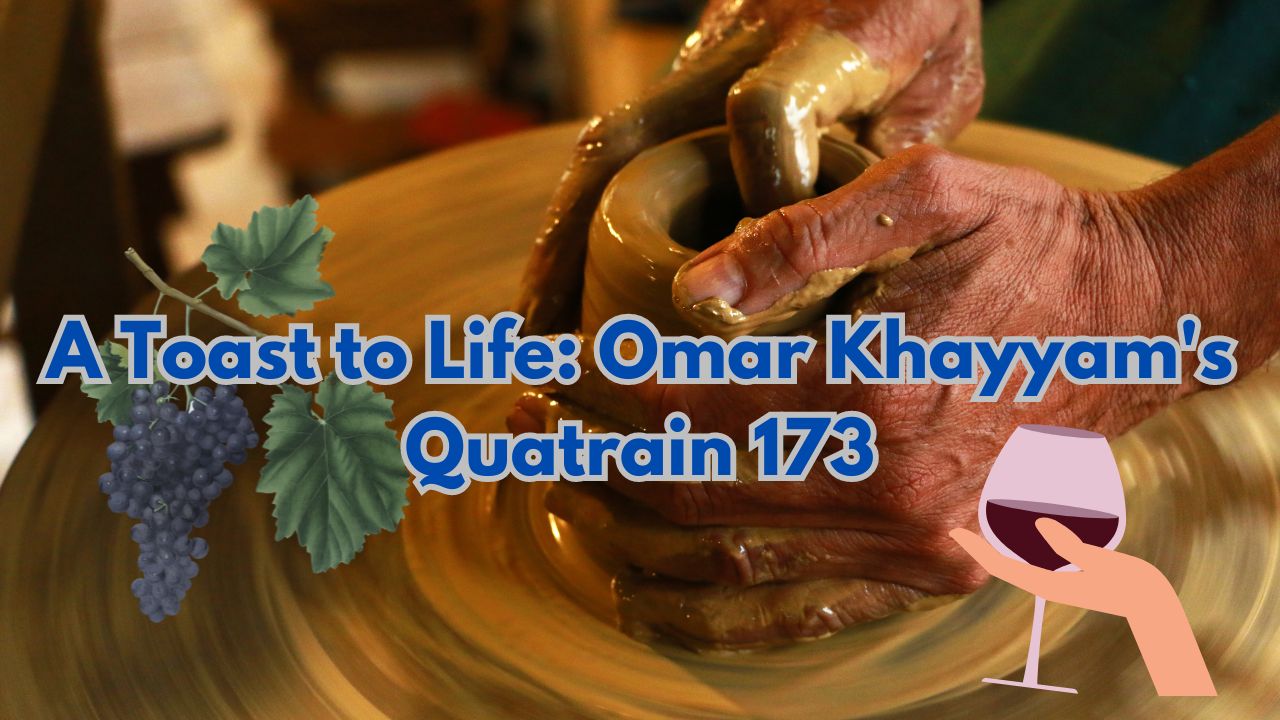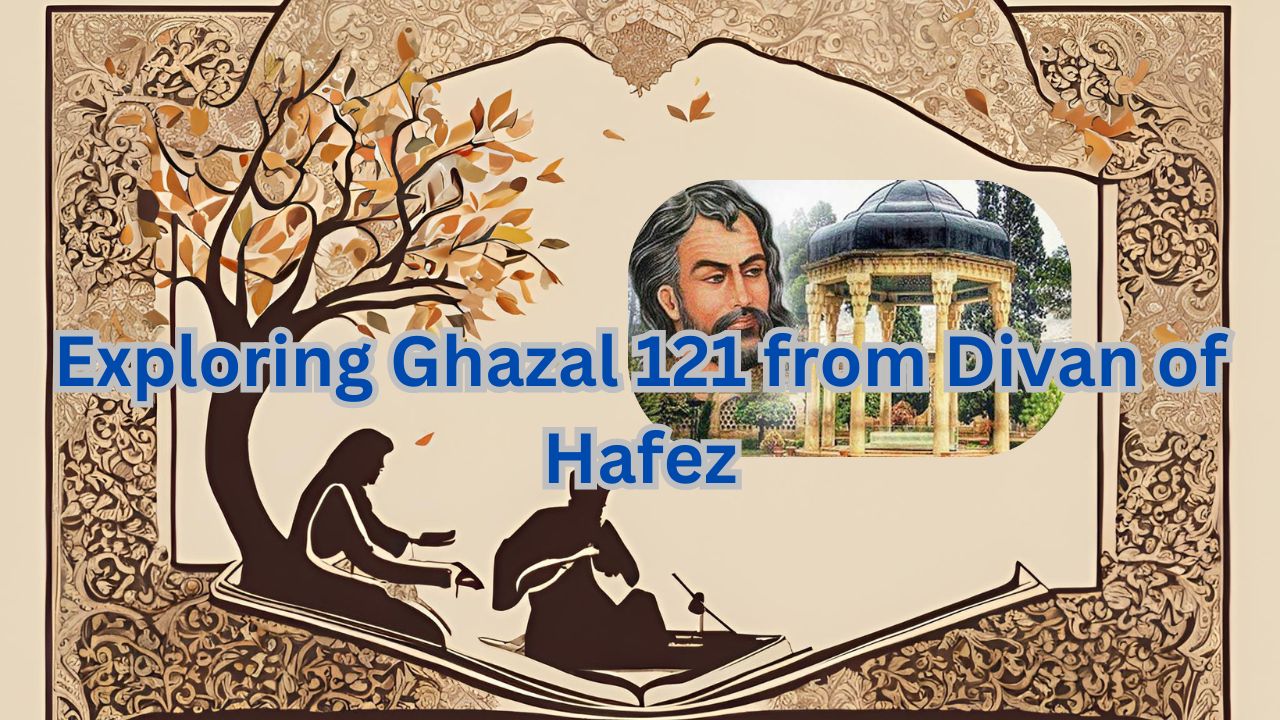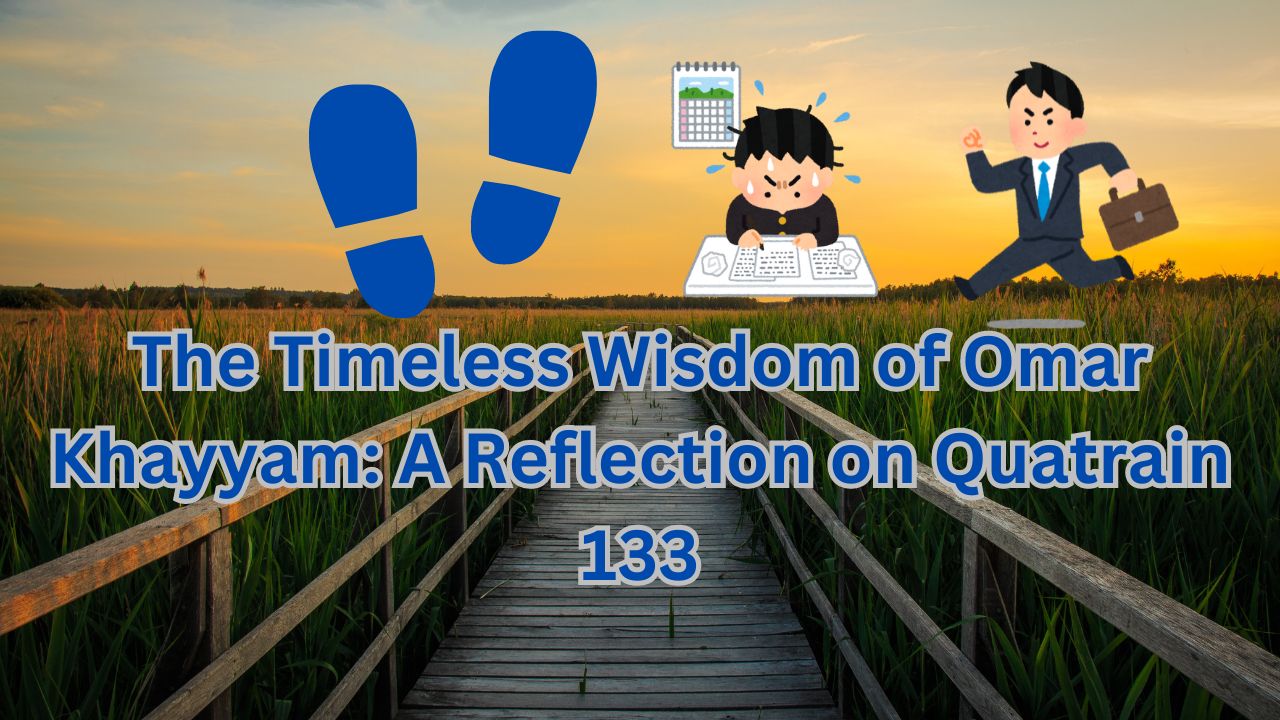In this post, we examine Quatrain 173 from the Rubaiyat of Omar Khayyam. We will begin by reading the original Persian poem, followed by its English translation, and then a brief analysis.
Omar Khayyám, the 11th-century Persian poet, philosopher, and astronomer, is renowned for his Rubaiyat, a collection of quatrains that offer profound insights into life, love, and the cosmos. Quatrain 173 is a particularly striking example of his work, capturing the essence of human existence with its evocative imagery and philosophical depth.
Original Persian Poem
زان کوزهٔ می که نیست در وی ضرریپر کن قدحی بخور به من ده دگریزان پیشتر ای صنم که در رهگذریخاک من و تو کوزه کند کوزهگری
English Translation
Fill up a cup from that jug of wine that has no harm,And give me another after that.Before we pass by on this journey,A potter will make a jug from both you and me.
Analysis of the Rubai
This quatrain by Omar Khayyám is a celebration of life, wine, and the impermanence of human existence.
The poem begins with a direct invitation to drink wine. Wine, in Persian culture, is often associated with pleasure, joy, and the fleeting nature of life. The poet suggests that wine is "harmless," implying that it can be enjoyed without guilt or fear.
The poet invites the reader to enjoy wine, a symbol of pleasure and life. This invitation is not just about indulgence but also about embracing the fleeting moments of joy that life offers.
The Potter’s Workshop
The central image of the poem is the potter's wheel. Khayyám compares humans to clay, destined to be shaped and molded by the potter of fate. This powerful metaphor highlights the impermanence of human life and the inevitability of death.
The image of the potter’s wheel and the creation of jugs from human remains is a powerful metaphor for the cycle of life and death. It suggests that just as clay is molded into different shapes, human life is constantly being reshaped by time and fate.
The Inevitability of Death
The poem emphasizes the transient nature of human life and the ultimate equality of all people. Regardless of our status or achievements, we all return to the earth, becoming part of the same cycle. Others come and go and the cycle continues to the end of this planet’s life. What we can do about it? A little bit, a tiny effect. But what we can do about ourselves is that we live our lives to the fullest, full of happiness and joy. When we finally die only the moments of happiness and self-satisfaction matters, nothing else.
Deeper Meanings and Interpretations
The poem encourages the reader to seize the day and enjoy life’s pleasures. It is a reminder to live in the present and make the most of the time we have.
The quatrain can be interpreted as a carpe diem poem, urging readers to make the most of the present moment. Since life is so fleeting, it's essential to savor its pleasures and experiences.
The Futility of Material Possessions
The comparison of humans to clay suggests that material possessions and achievements are ultimately meaningless. What matters is the essence of our being and the experiences we gather.
While the poem's surface meaning is clear, there are deeper layers to explore. The image of the potter's wheel can also be seen as a symbol of the interconnectedness of all things. The clay that forms the jug comes from the earth, and the jug itself will eventually return to the earth. This suggests a cyclical nature to existence and a sense of unity with the universe.
The image of the potter creating vessels from human remains suggests that all beings are interconnected and part of a larger cosmic order. This unity transcends individual existence and highlights the interconnectedness of all life.
Possible Interpretations and Questions
-
What is the significance of the wine in this poem? Is it simply a symbol of pleasure, or does it have deeper spiritual or philosophical connotations?
-
How does the image of the potter’s wheel relate to the concept of fate or destiny?
-
What is the poet’s attitude towards death? Is it one of fear, acceptance, or even celebration?
Quatrain 173 is a timeless piece of poetry that continues to resonate with readers centuries after it was written. It is simple words on the surface, but has deep meanings. Its exploration of life, death, and the human condition offers a rich and rewarding experience.
This rubaei offers a rich and complex exploration of the human experience, and it can be interpreted in many different ways. By examining the specific language and imagery used by Omar Khayyám, we can gain a deeper understanding of his thoughts and feelings.





